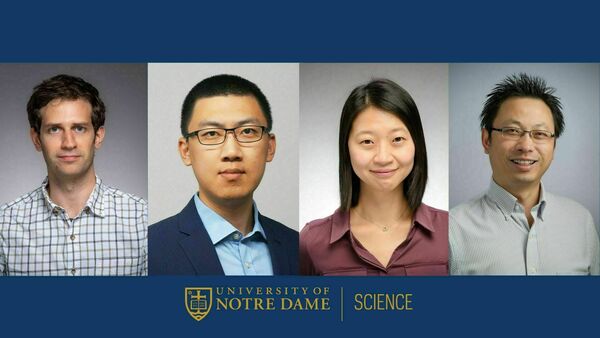
Four University of Notre Dame physics professors studying inversion symmetry breaking (ISB) in superconductors were jointly granted nearly $1 million from the U.S. Department of Energy for their research. Their work will contribute to the search for better superconductors that can be used in quantum technologies.
Assistant Professors Badih Assaf, Xiaolong Liu, and Yi-Ting Hsu, along with Associate Research Professor Xinyu Liu, will determine through experimental and theoretical methods how to tune and enhance Berry curvature in superconductors — materials that conduct electricity without any lost energy. Berry curvature is a twist in the quantum world that affects an electron’s behavior as it moves around or reacts to changes in its environment.
In order to do this, the researchers will synthesize and study materials that have a crystal structure that breaks inversion (up-and-down) symmetry.
Improved superconductors can allow for better energy transmission, faster electronics, more efficient transportation systems, improved medical imaging, and other benefits. Breaking the inversion symmetry will create a special type of superconductor that has a finite and large Berry curvature. Extremely rare in nature, this property may lead to the development of novel quantum electronic devices, Assaf said.
“Our project aims to reveal how the lack of symmetry, by atomic-level design, in superconductors can cause unconventional properties that may be beneficial to search for extremely rare unconventional superconductors that might be useful platforms for error-free quantum computers,” said Assaf, who, along with Xinyu Liu and Xiaolong Liu, is affiliated with NDNano.
Each researcher brings different strengths to the project. Hsu is an expert in symmetry analysis, which is a theoretical method of inferring the properties of a material from the geometric symmetries of its crystal structure. Assaf and Xinyu Liu can design and synthesize materials, and Xiaolong Liu will study these superconductors using atomic resolution scanning tunneling microscopy to extract information about their quantum mechanical electronic structure and their pairing symmetry.
The grant funds research through August 2026.
William McManus, Ph.D., contributed to this article.